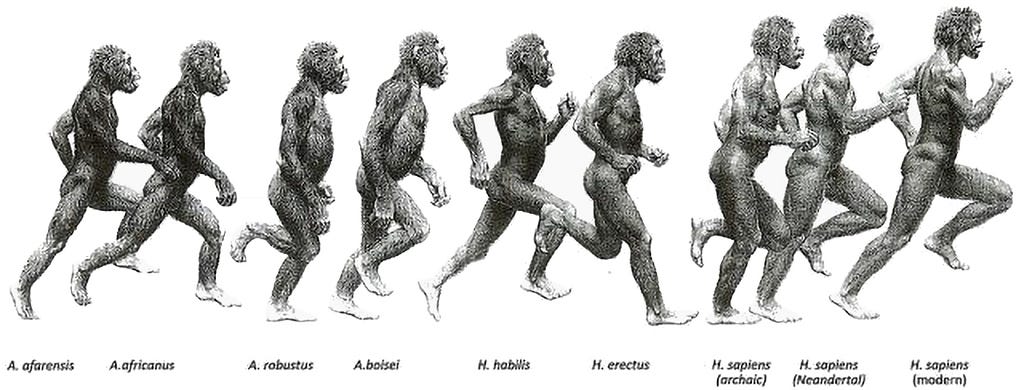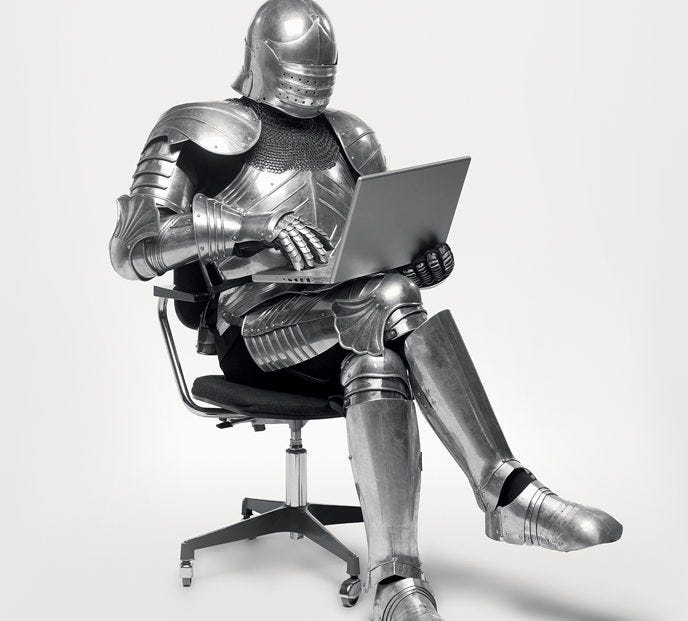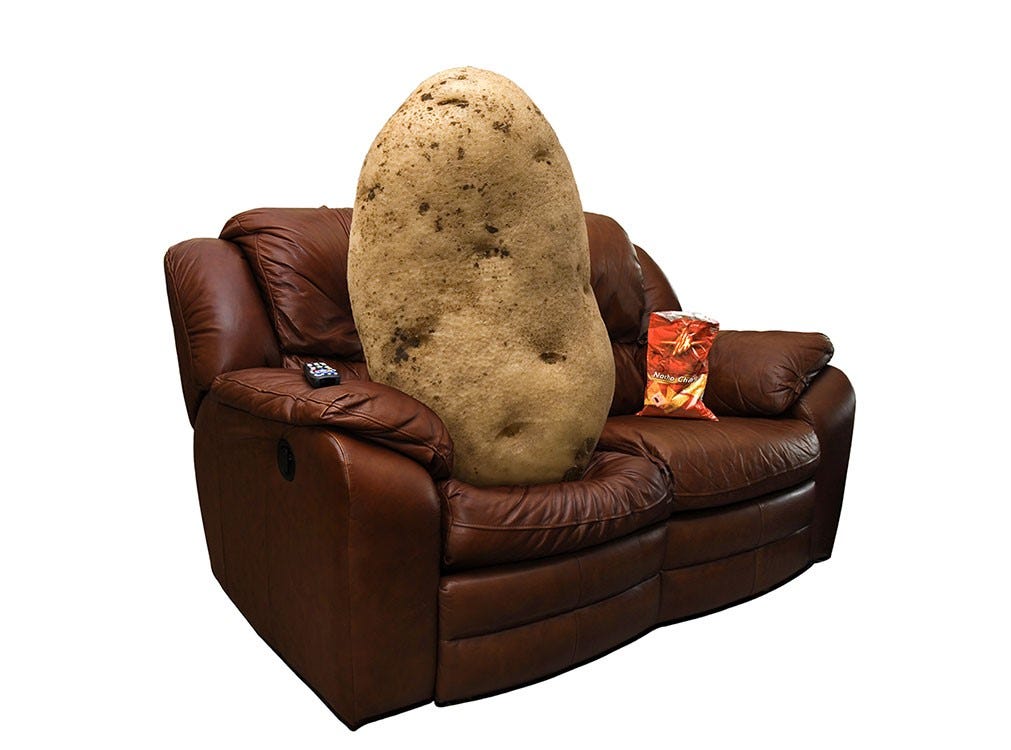You sit a lot. And that’s not good. — So how do you stay fit and healthy?

You sit a lot. I sit a lot, we all sit too much. Most of the sitting happens at work, and you’re probably not going to quit your job because of it.
Fortunately such drastic measures are not needed. What is the alternative?
A lot of online guides recommend getting up and squating every 20 minutes. Or walking around your office.
Instead I will try to describe some more realistic ways of improving a sedentary lifestyle.
But first I want to give you some context:
My routine from Monday to Friday consists of:
I have other errands to do, sometimes fewer, sometimes more. But having lunch/dinner, and just being at home will likely consist of sitting one way or the other. Most of the people I talked with have a similar schedule.

That is 10 hours of sitting at the bare minimum.
And humans are not made to sit. The cardiovascular system and bowels function much more efficiently when standing upright. Our hunter-gatherer ancestors could not outsprint a wild animal, but they could chase it down eventually. We evolved these capabilities and requirements over vast periods of time and we haven’t changed in the past 100 years.
Moving and Exercising affects our hormone levels: Cortisol, Testosterone and Estrogen among others. This affects both directly and indirectly our mood, health and health predispositions. We advanced, and now have the world and its information on the palm of our hand. But that hand hurts us if we only twist it a bit.
Sitting on it’s own leads to few ailments, but it adds up. There’s genetics, the food we eat and probably a very large list of other smaller factors.
With that said, prolonged inactivity can in some cases lead to (brace yourself): Varicose veins, deep vein thrombosis, back and disc problems, heart disease, anxiety and depression and etc. (I have put links in their respective disorders for more detailed explanations on what they are and how prolonged sitting can contribute to them.)
Since we established movement is necessary, the next step is to add activity to both your lifestyle and office.
And becoming active isn’t as demanding as it may seem. Taking it slow is fine, and even baby steps count. Every step (literally) towards making a difference is good.
The first and obvious way is to introduce proper activity in your life. It is important that this activity isn’t something you have to force yourself to do everytime. That isn’t sustainable.
Perhaps you wanted to try out new things for a while but didn’t commit to it. Maybe you wanted to hike, swim or do archery. If you are starting out, find local clubs to have guidance and have an easier time as a beginner.
Some of the things I’d suggest are:
Fencing/Archery — While fencing is agility and reflex focused and more intense, archery is about control and precision. My colleague and I found both exciting. As soon as we heard an archery club was nearby we signed up, and loved it!
Martial arts — From ancient arts to modern ones, they are all great workouts. Count on improving your endurance, strength, weight and even mental health.
Fitness/gym — Obvious and probably the first choice for most. As a beginner consider hiring a coach or teaming up with an experienced friend. Figuring out workouts on your own can be confusing.
Swimming — One of the most all-around sports for physical development. This is the easiest way to get a full-body workout. Plus, you can cool off in the summer. Yoga/Pilates —This is great against those tightened muscles, and a lot of exercises aren’t nearly as easy as they might seem to some.
Indoor rock climbing — Combine the excitement of climbing a mountian, but take away the risk of plummeting down a thousand feet. What’s not to love? I tried this in college and wholeheartedly recommend it!
Hiking — Besides improving your shape, it’s a very rewarding experience.
On one side you’re combating inactivity, and on the other you found yourself a new hobby (Let’s assume you will). I call that a win! But you’ve just won the battle, not the war.
Sometimes I go swimming, to the gym, and occasionally hiking. I considered myself as being reasonably active, considering I spend most of the day sitting.
But once you sit ~10 hours per day you can’t help but shift your perception of what active is. My activity equals less than 10% of my time awake (If I did this everyday, which I don’t, of course. It’s even less than that).
So apparently I’m what is called an active couch potato.

I tricked myself into thinking I’m fully countering the bad effects of inactivity. It’s all nice and well, but I’m just as static for the rest of the time as I was before.
We need to break that apart and include movement into the workday where possible. This isn’t as simple as saying stand up every hour or so. In practice it’s easy to forget or get carried away with your project/assignment. It takes work.
So here goes the list:
Consider getting a better Chair — investing in a proper ergonomic chair is a good move regardless of this text. Proper posture and lumbar support is something your back will immediately be thankful for.
Walk — If possible walk to work, or cycle. Use the opportunity to climb the stairs to your office when arriving to work, going to lunch, coffee etc. Even small things like moving the rubbish bin further away, so you need to stand up and walk to it. Instead of sending a cold e-mail walk over to your colleague.
Standing desks have seen more usage recently. My colleague in the office next door uses an adjustable desk and alternates between standing and sitting. Even some big names like Facebook, Twitter and Google are including them in their workspaces.
If this isn’t an option for you, you can always just stand up for a bit and stretch.

Work on your posture — Set your chair so that you sit upright. Your upper back should be straight and your lower back supported. If the chair doesn’t provide that lower support you can use a pillow.
Your arms should be in a resting position, at a 90 degrees angle.
So should your legs. Crossing or tucking them behind the chair’s legs can reduce blood flow.
We sit a lot, because we have a sitting routine.
And our body isn’t made to sit.
So change your lifestyle and working habits.
We can’t get away from sitting. And we sometimes like it. Dr. James Levine said: “Sitting is the new smoking”.
But for the sake of our health, any exercise is better than none. It’s each individual’s challenge to find a fitting lifehack to becoming more active throughout the day.